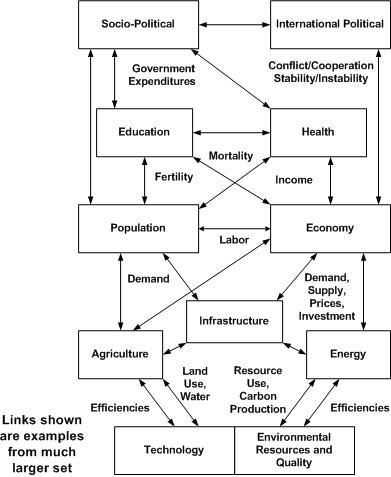Introduction to IFs
Jump to navigation
Jump to search
Purposes
International Futures (IFs) is a tool for thinking about long-term global futures. It assists with:
- Understanding the state of the world
- Exploring trends and considering where they might be taking us
- Learning about the dynamics of global systems
Thinking about the future we want to see:
- Clarifying goals/priorities
- Developing alternative scenarios (if-then statements) about the future
- Investigating the leverage various agent-classes have in shaping the future
Assumptions that underlie IFs development and use:
- Global issues are become more significant as the scope of human interaction and human impact on the broader environment grow
- Goals and priorities for human systems are becoming clearer and are more frequently and consistently enunciated
- Understanding of the dynamics of human systems is growing rapidly
- The domain of human choice and action is broadening
What can you investigate with IFs? Examples include:
- Environmental Sustainability: Atmospheric carbon dioxide levels, world forest area, fossil fuel usage
- Social/Political Change: Life expectancy, literacy rate, democracy level, status of women, value change
- Demographic Futures: Population levels and growth, fertility, mortality, migration
- Food and Agriculture: Land use and production levels, calorie availability, malnutrition rates
- Energy: Resource and production levels, demand patterns, renewable energy share
- Economics: Sectoral production, consumption, and trade patterns and structural change
- Global System: Country and regional power levels
